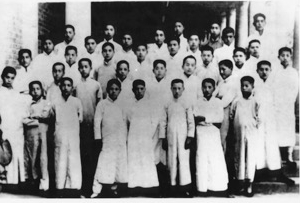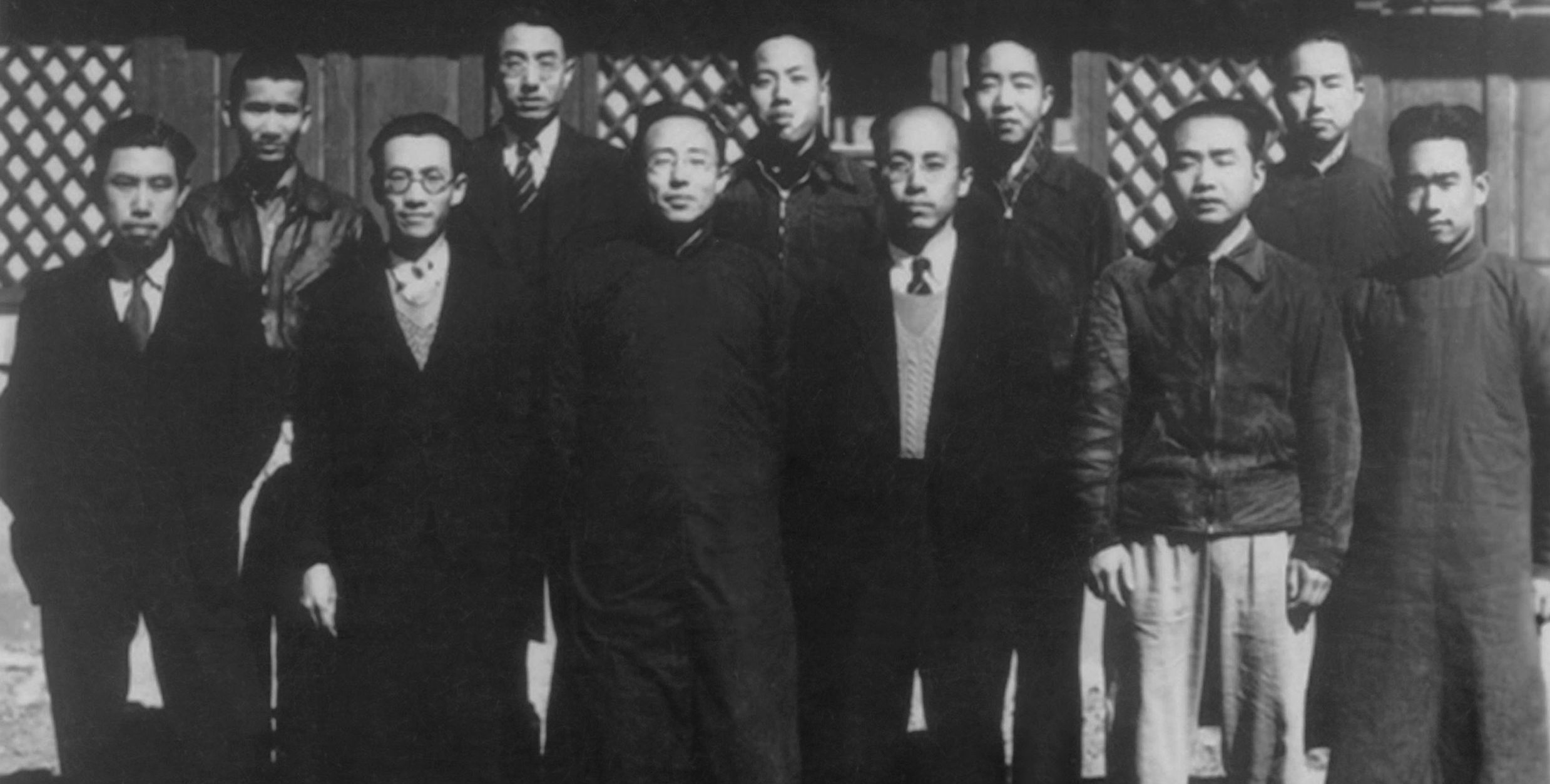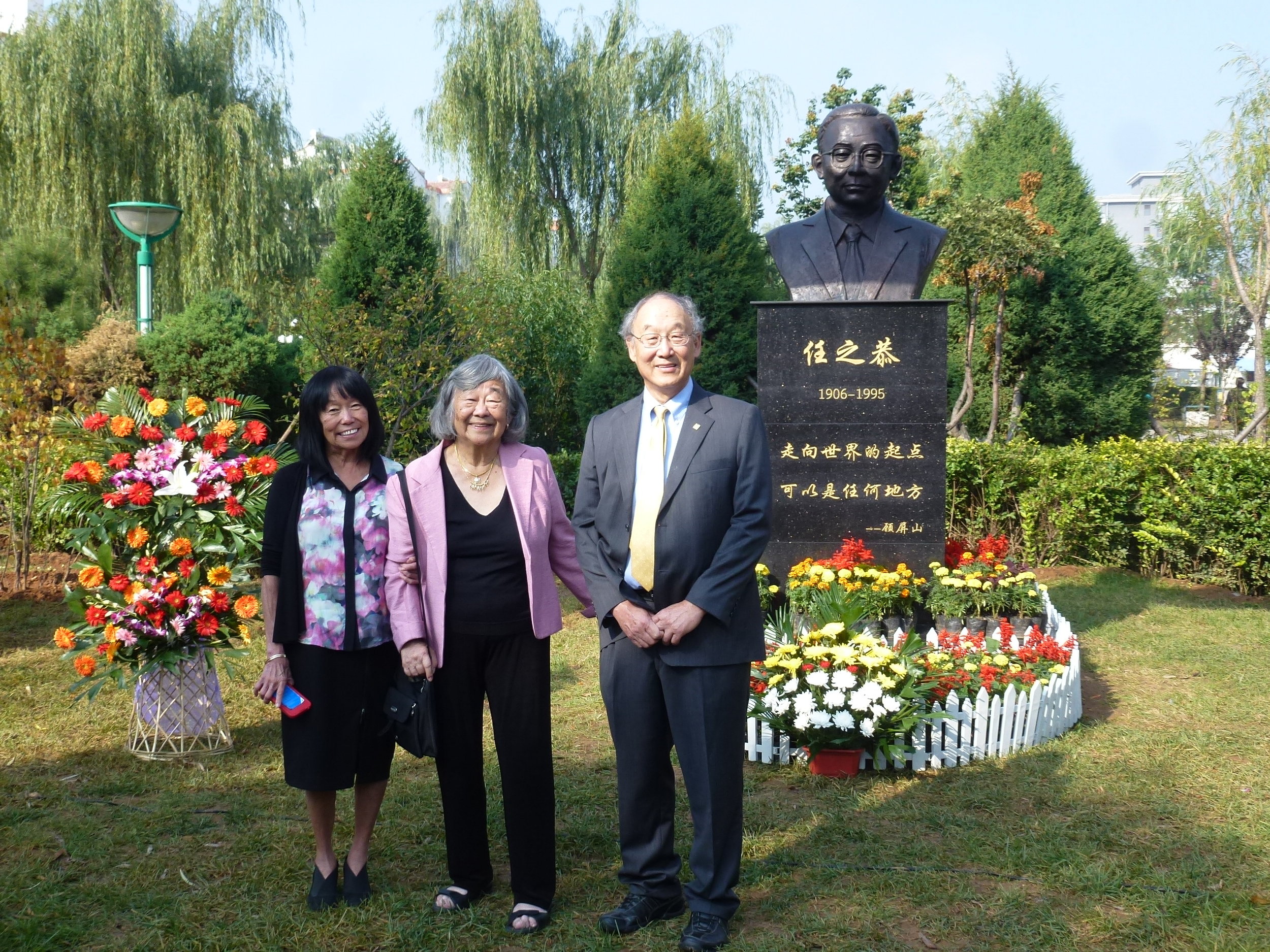C.K. JEN 任之恭
Pioneering PHYSICIST and "scientific diplomat"
“I am still sentimentally attached to China. But I have now lived in America longer than in China. Which is my country? Both.”
C. K. Jen (1906-1995)
CK Jen at Tsinghua before attending MIT, front row, first right. Image courtesy George Koo.
CK Jen ca. 1920. Image courtesy George Koo.
Jen Chih Kung (1906-1995)
pinyin Ren Zhigong (CLASS OF 1928, ELECTRICAL ENGINEERING) was a native of Shanxi Province, a brilliant man who rose from a humble background to gain world renown as theoretical and experimental physicist. Born in the remote and desolate peasant village of Hexi, to parents of limited education, Jen left his village at age 11 to attend the District Elementary School in Qinyuan. Excelling in school, in 1920 he passed the highly competitive national examination to secure a Boxer Indemnity Scholarship to Tsinghua, where students received an eight-year preparatory education before being sent on full scholarship to study for five years in the US. Jen was one of only four students from his entire province admitted that year.
CK Jen, MIT Technique 1928. MIT Archives and Special Collections.
Completing his Tsinghua studies, Jen came to the US in 1926, traveling aboard the steamship President McKinley, and matriculated at MIT. In Cambridge, he lived together with another MIT Chinese student in a rooming house at 41 Inman Street in Cambridge. Starting with advanced sophomore standing, Jen earned his BS in Electrical Engineering in just two short years, writing his thesis under the supervision of Prof. W. V. Lyon on the subject of "A mathematical analysis of the armature copper loss in an A.C. Commutator Motor." Norbert Wiener and Vannevar Bush were also among his early mentors at MIT. Recalling in his memoirs the popular expression "Tech is hell!," Jen wrote of his MIT days:
"There was no question that ‘Tech was hell’ in that I was as busy as a beaver practically all the time I was a student there." (p. 33)
Jen went on to receive a Master's degree from the University of Pennsylvania in 1929, and a PhD in Physics from Harvard University in 1931. His PhD dissertation was on the subject of "A New Treatment of Electron-Tube Oscillators by an Extended Theory of Coupled Circuits." After receiving his degree, Jen stayed on at Harvard for 3 years, working as a Teaching Fellow, and then Lecturer in Physics.
Returning to China
Jen returned to China in 1933, accepting a post as Professor of Physics at Shandong University, before moving to Tsinghua in 1934 as a Professor of Physics and Electrical Engineering. When the Japanese invaded Beijing in 1937, Jen joined the "Academic Long March” of faculty and students who fled thousands of miles to Changsha and then Kunming in China's far southwest, setting up a wartime "refugee university" that would become the National Southwestern Associated University. Despite the primitive conditions at this campus, Jen managed to develop several radio devices, including the first radio tube in China, and he trained a generation of students who went on to become some of modern China's most important scientists.
Group photo of faculty and family of National Southwest Associated University (Xinan Lianda), 1940. CK Jen is at the center front row, kneeling down, with his wife, Paocheng Tao, on his right side, her face partly obscured by a standing May, their first-born daughter. Image courtesy George Koo.
returning to America
After the conclusion of World War II, Jen was sent to the US for further training as part of China's postwar reconstruction efforts. In 1946, he received an appointment as a Visiting Lecturer in Electronics at Harvard University, where he began studying microwave spectroscopy, pioneering a major field of research that would pave the way for the development of the microwave oven. This sabbatical turned into a permanent stay after the Communist Revolution of 1949 prevented his return to China – making him a refugee once again. Jen thus joined what was to become an important cohort of prominent Chinese scientists granted asylum by the American government in the 1950s. In 1950, the Applied Physics Laboratory at Johns Hopkins University appointed him as a Senior Physicist. Only gradually realizing they would not be able to return to China as planned, Jen and his wife became naturalized US citizens in 1955, embracing America as their new home.
In 1959, Jen was elected to two prominent positions: Director of the American Physics Society, and Academician of the National Academy of Sciences. Further distinction came in 1962, when the Academia Sinica in Taiwan appointed him an Academician.
Jen's international distinction as a pioneering physicist enabled him to play an important diplomatic role in 1972 after Nixon's visit to China, and he led the first delegation of Chinese-born American scientists to visit Communist China, helping to establish a vital flow of scientific exchanges between the US and the PRC. After his retirement in 1977, Jen dedicated his energy to developing Sino-American scientific exchange, and to improving modern physics education in China. Jen alternated his time between lecturing to Chinese audiences about cutting-edge discoveries in physics, and lecturing to American audiences about conditions in China after the Communist Revolution of 1949. Explaining his dedication to scientific and cultural diplomacy, Jen remarked:
“I am still sentimentally attached to China. But I have now lived in America longer than in China. Which is my country? Both."
Bust of CK Jen in his hometown, Qin Yuan, 2016. Image courtesy George Koo.
In 1981, Jen published an assessment of the state of science and technology in China and state plans for their advancement promulgated in 1978. His report emphasized the need for "keeping an open exchange of information between nations and people."
Jen is most famous for his contributions to the experimental proof of the existence of the ionosphere, and for his cutting-edge work in the field of microwave spectroscopy. The author of numerous scientific papers, in 1990 Jen published his memoirs, Recollections of a Chinese Physicist.
In 2016, Jen's hometown held a commemorative event to honor the 110th anniversary of his birth date, in order to inspire the younger generation. Please read this Asia Times article on the commemoration and for more on Jen's history.



Sources: MIT Chinese Students Directory: For the Past Fifty Years, 1931, Ren, Zhigong, Recollections of a Chinese Physicist, Los Alamos, NM: Signition, 1990, http://library.mit.edu/item/000813714, Ren, Zhigong, Recollections of a Chinese Physicist, Los Alamos, NM: Signition, 1990, 33, Walter G Berl, Chih Kung Jen—A Remembrance, Johns Hopkins APL Technical Digest, volume 17, no. 3 (1996): 330-332, Jiaoyu zhi qiao: cong Qinghua dao Mashengligong (Bridge of Education: From Tsinghua to MIT), Hong Kong: Cosmos Point Limited, 2011, Dicke, William, "Chih Kung Jen is Dead at 89; Leader in Microwave Physics," New York Times, November 24, 1995, C.K. Jen, "A Physicist's View of Science and Technology in China," Johns Hopkins APL Technical Digest, volume 2, no. 3, 1981, 209-221, 任之恭纪念馆 http://renzhigong.netor.com/, Ren, Zhigong, Recollections of a Chinese Physicist, Los Alamos, NM: Signition, 1990, http://www.atimes.com/on-his-110th-birthday-prof-c-k-jen-gets-a-hometown-honor/, email correspondence with George Koo.




